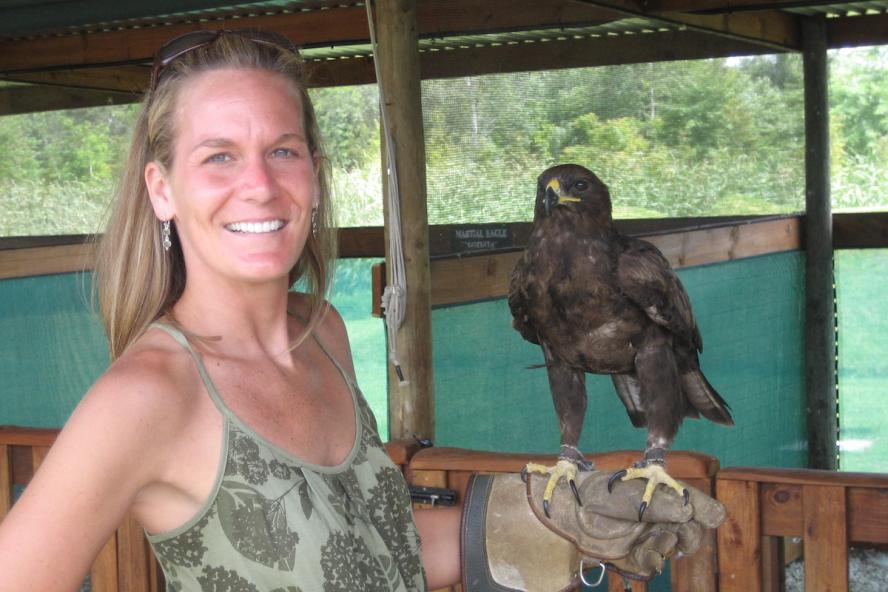-
About
- Leadership & Faculty
- News & Events
-
Academics
- Graduate
- Advanced Clinical Training
- Continuing Education
-
Student Life
- Graduate Programs
-
Research
-
Hospitals & Clinics
- Emergency Care
-
Community Outreach
- Volunteer
Committed Wildlife Rehabilitator
Q&A with Wildlife Clinic Program Administrator Whitney Stiehler Department of Infectious Disease & Global Health

What is your job and what is your favorite part of it?
I am the program administrator for Tufts Wildlife Clinic at Cummings School of Veterinary Medicine at Tufts University. I am responsible for managing clinic operations, personnel, student hiring and learning, volunteer coordinating, finances, scheduling, and some animal care. The favorite part of my job is working with the animals with the incredible staff that dedicates themselves to their care.
It is miraculous what the staff and students do for every injured or sick wild animal that comes through our doors. From the way our staff can guide a good Samaritan on how to safely rescue an injured owl over the phone, to the moment wildlife arrives at the clinic and receives emergency critical care, to the hospitalization and care of the animal while it is recovering, and then eventually, to its release back to the wild, is amazing. The compassion and care that the team gives to these animals is undeniable. Being around a team that has the same devotion as I do to the mission of getting injured wildlife back into the wild is refreshing and wonderful. I know how lucky I am to work here.
How long have you been at Cummings School and what makes it a special place to work?
I have been working in the Wildlife Clinic for 12 years. I believe that the grounds, the animals, the open spaces, and the natural landscape around the vet school make this place special. There is always no shortage of animal life around us. Walking by the horses, sheep, cats, dogs, and all other critters that visit the campus is remarkable.
It always brings a smile to my face to encounter a dog with a wagging tail or to receive a “Moo” from Annabelle as I walk by. But what is even more amazing is the wildlife that lives here. I try to walk every day, and on these walks, I have seen turkey vultures, red-tailed hawks, hooded mergansers, snowy owls, American kestrels, Baltimore orioles, yellow warblers, bluebirds, pileated woodpeckers, bobcats, coyotes, foxes, rabbits, woodchucks, deer, and fisher cats. The campus is beautiful and full of healthy wildlife if you know where to look.
What brings you the most joy?
Photographing the wildlife patients in the clinic on the day of their release brings me the most joy. I am a budding wildlife photographer and having the privilege of photographing an animal going back to the wild after a full recovery from an injury is beautiful. Some will pause before they leave (as if they are saying thanks) but others bolt immediately, never to look back. Either way, I am proud to be a part of this process and this amazing place.